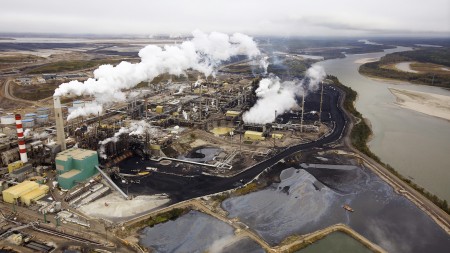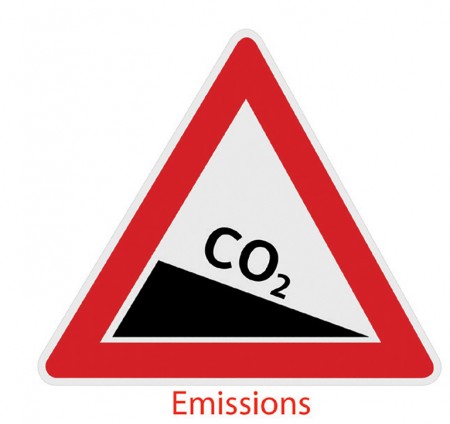March 14, 2016 – It is easy to see how getting off coal can pay immediate dividends in addressing climate change. More coal is burned for energy than any other fuel source today. And although oil may account for the largest risk as economies transition to low-carbon models, coal provides the largest emission reduction potential.
In a report produced by the Climate Policy Initiative (CPI) it states that stopping the burning of coal can achieve 80% of needed emission reductions. At risk from this move to stop the use of coal is 12% of the entire energy industry’s assets. In contrast, however, oil, which represents 15% of needed emission reductions, accounts for almost 75% of the industry’s assets.
In Canada the majority of energy providers have transitioned from coal or are in the process of planning to do this. In one case carbon capture and sequestration is being used in conjunction with a coal-fired power plant (the Boundary Dam Project in Saskatchewan). So the country is on a path to manage a portion of the energy sector that has been the largest contributor of greenhouse gas emissions.
Transportation’s reliance on oil represents the next great challenge. What that means is either inventing a means to eliminate greenhouse gases from fossil fuel burning vehicles, or eliminating the use of oil-based fuels and vehicles that require them. It’s a tall order but a necessary one.
This is the challenge for Canada as well as other countries. But in Canada, in particular, and in Alberta, the province that is the largest producer of oil wealth in the country, it is a truly difficult problem to face and overcome.
In an article appearing in today’s Globe and Mail, Jeff Rubin, Senior fellow at the Centre for International Governance Innovation (CIGI), and an author of “The Carbon Bubble: What Happens to Us When it Bursts” describes strategies to help weather the coming transition to low carbon.
Where can Alberta’s expensive oil sands fit in a world where burning the product is counter to reducing the impact of climate change? Alberta faces three problems. The first is production costs. The second is location. And the third is carbon content in the extraction and production process.
Easily the most expensive oil to produce in the world describes the oil sands. And in today’s low oil price marketplace that makes Alberta bitumen noncompetitive. This is exacerbated by the remoteness of the resort and the long distances for transportation needed to get the product to consumers. And finally the product itself contains high levels of carbon, more than twice the amount found in light crude oils produced by Norway, Saudi Arabia, and others. Investment in decarbonizing the oil adds even more cost to the product.
So here we are today with an oil-glutted world market, a commitment by Canada to reduce greenhouse gas emissions from 2005 levels by 30% by 2030, and an oil sands producing community looking at a production road map far different from the one envisioned a decade ago. No longer is it possible to consider ramping up oil sands output from 2.5 million barrels today to 6 million by 2030. The more likely scenario is a reduction in production over time with negative economic consequences for the economy of Alberta.
What’s needed, states Rubin, is “a change in economic strategy.” Today more than half of Alberta’s bitumen leaves the province extracted but unrefined. The clamor for pipelines has always been about getting this unrefined product to tidewater whether it was through Keystone XL to Texas refiners, Northern Gateway to British Columbia ports, or Energy East to refiners in Quebec and New Brunswick. But why all that noise and pipeline bluster to get an unrefined low-value product to customers when refining on location could create high value fuels and added-value plastics that generate new wealth for the province’s economy? In addition successful carbon reduction projects like Shell’s Quest can become a high-valued export technology for the province and its workers to demonstrate world leadership in carbon capture and sequestration.
At some point as we complete the low carbon transition many existing oil sands operations will no longer be viable. There will be a significant cost to remediate the land upon which these mega projects are situated. The money raised from high carbon taxes may end up helping to pay to restore the land environment as well as the water and air.
For Canada’s governments at the provincial and federal level, any delay in implementing a carbon tax, will only delay beginning the transition and challenges that Rubin describes as “a sunset industry.”
For ExxonMobil, Suncor, and other energy producers there may be an industry model to follow. Statoil, the Norwegian state oil company set an internal $50 U.S. per ton carbon tax which is described as the “strong commercial influence” to motivate the company to a 50% carbon intensity reduction for the oil it produces presently. The company has met its intensity reduction targets to date. If Canadian producers were to act similarly it would help the nation begin the transition we all know must happen to keep climate change from becoming a challenge for the generations that follow.
In a talk entitled, “Preparing Statoil for a low carbon world,” given by John Knight of Statoil and Zara Qadir, Communications Manager for the Sustainable Gas Institute, the two talk about the transition to a low carbon economy and how “few of us know how exactly we will get there.” But they are convinced that the companies in the oil and gas sector are well positioned by both “wealth and experience” and in “tackling large scale engineering problems” and solving them.
So maybe we need a strategy of coercion and persuasion to get ExxonMobil, Chevron, Royal Dutch Shell, Suncor and others here in North America to direct their energy and know how to make the same long-term commitment to climate change that Statoil has done rather than spend their billions to drill in the Arctic or extract bitumen from Alberta’s north.
Related articles across the web













It is very interesting that you talk of the plan of Statoil and Norway to get out of Oil.
But like about Saudi recent oil dumping, and aramco sales, the fact that banks and oil companies have sold oils field to states and funds, ther is maybe a deeper reality.
This was the subject of this meeting organised by NTVA and TEKNA
http://energi.tekna.no/lavenergetiske-kjernereaksjoner/
This seminar is translated in english there
https://portal.tekna.no/ikbViewer/Content/917462/LENR%20Seminar%20Oslo%205%20%20Nov%202014%20EN%20(2).pdf
and one of the participan made his own summary
http://www.lenr-forum.com/forum/news/index.php/News/27-Infinite-Energy-A-Trip-to-Norway-Michael-C-H-McKubre-Norway-searching-how-to-hed/
Meanwhile Steven Chu was making a travel with Robert Godes to statoil, after a visit to Finish Green ex-minister Pekka Haavisto
Note that it is Elforsk, now named Energiforsk after a merge, who is the scandinavian reference in that affair.
this is more than 1 years ago, and things are more precise now.
Even Airbus is aware, and saudi are dumping their oil like AppleStore dump old iPhone before the new generation arrive.
Hi AlainCo, I chose not to describe Statoil’s specific plans in addressing a transition from oil to a low carbon future other than to state that the company recognized the challenges and was up for them. Thank you for the links to the NTVA and TEKNA meetings.
As for LENR I have written extensively about this subject and am convinced that whatever the energy derived from the chemical reaction taking place in every one of these reactors, there is little in the way of a successful commercial application of the technology. How many times have we been promised a LENR commercial launch? The company in Australia, the company in Greece, Rossi’s various announcements…..it all seems pretty specious to me.
No faith in fusion power? No deuterium to acquire in the Hudson Bay?
Hi Harlan, I chose not to address fusion in this particular piece which is focused on what to do with oil in a future low carbon world. As for fusion my latest contributions to the subject can be found at https://www.21stcentech.com/general-fusion-takes-step-developing-magnetized-target-fusion-technology/. And if you do a search on “fusion” on my blog site I think you will see whether faith describes my position on the subject or not. I assume the deuterium reference is tongue in cheek.
Well actuaaly, I was curious if Heavy Water resources are useful to anyone and whether the Hudson Bay captures mor or less than elsewhere.
According to my understanding heavy water is evenly distributed in seawater at a rate of about 330 parts per million. I don’t think Hudson Bay gets any preferential treatment. I consulted some physics sources to see if there is any variability based on cold versus warm, deep versus shallow. One site I visited questioned this saying if salinity increases in deeper water why wouldn’t other constituents within seawater alter? But as for Hudson Bay, this issue is not relevant since the Bay is generally a shallower body of water than much of the ocean. Moreover the Bay is less salty than surrounding oceans because it has a significant number of rivers emptying freshwater into it and its outlet to the Arctic Ocean is somewhat restricted through the Hudson Strait. In fact much of the Bay has very low salinity at the surface with the average depth about 100 meters.
Why don’t you mention the Fossil Fuel Subsidies Phasing Out Issue?
Hi Jaime, See Point 9 in a recent posting of mine entitled, Climate Action Network Canada……Roadmap for the Country. The link is https://www.21stcentech.com/climate-action-network-canada-fight-global-warming-roadmap-country/. Or read point 3 in the posting at: https://www.21stcentech.com/government-official-read-choosing-economic-growth-fighting-climate-change-longer-issue/. And see the last point in the following posting: https://www.21stcentech.com/learn-state-future-report/.